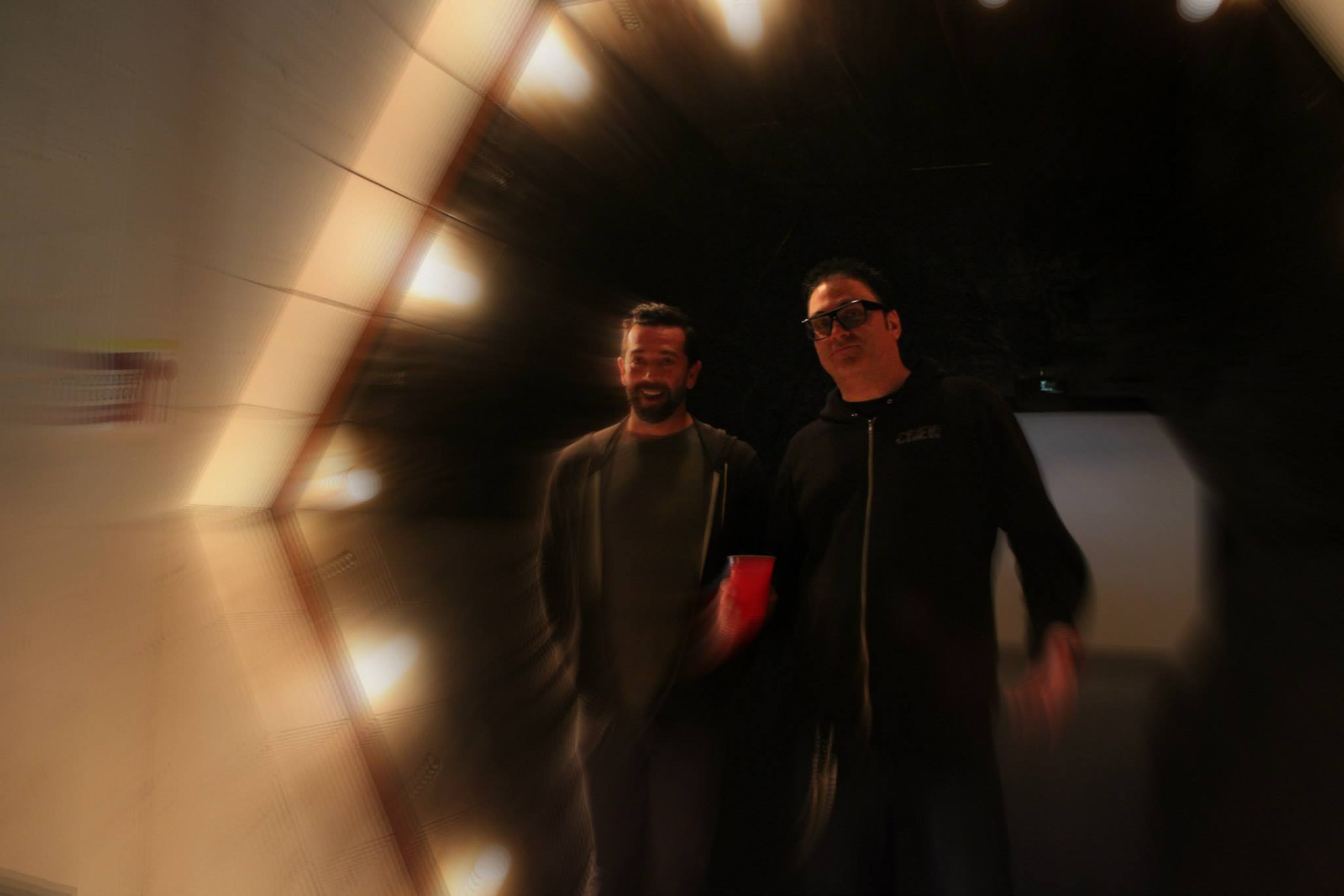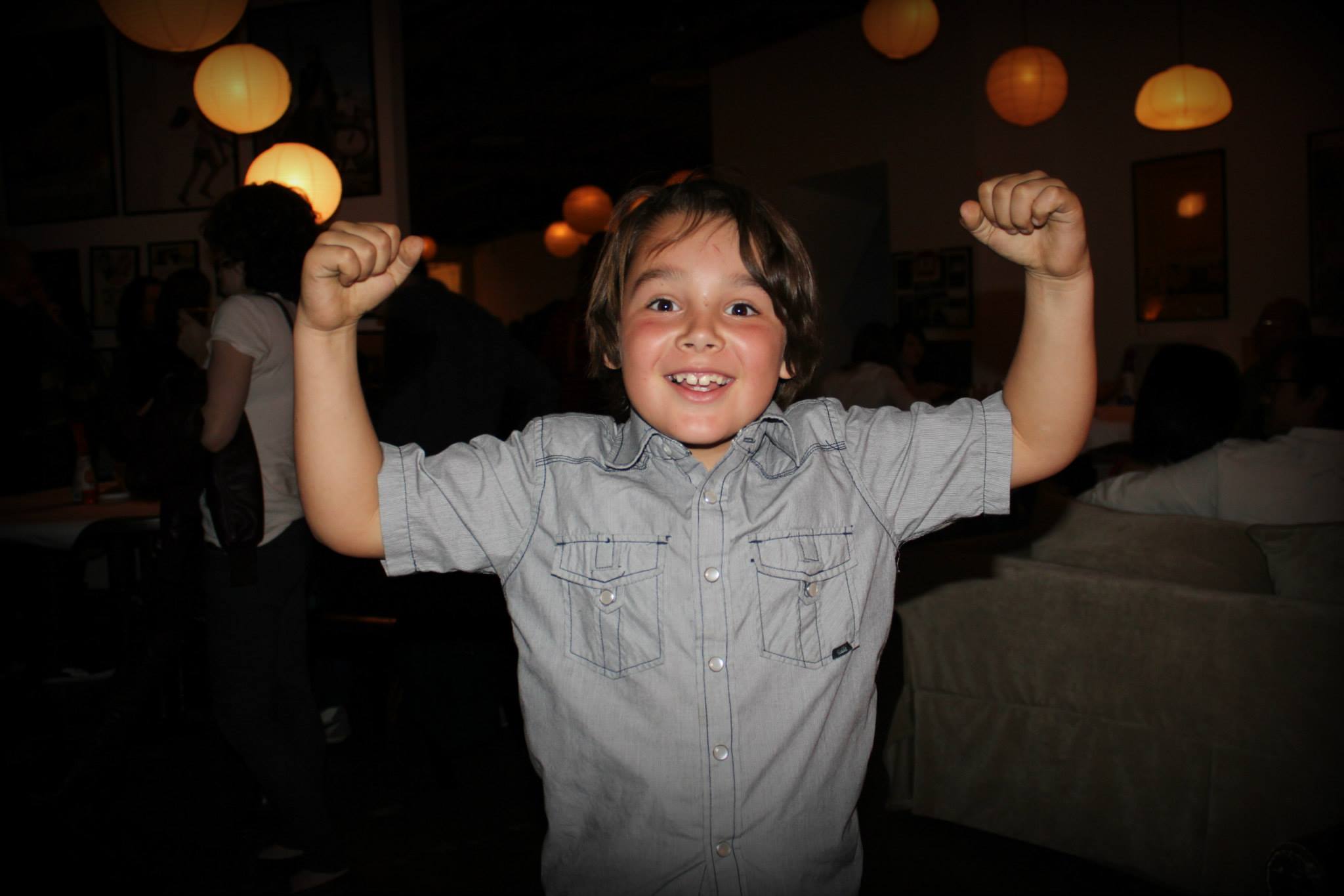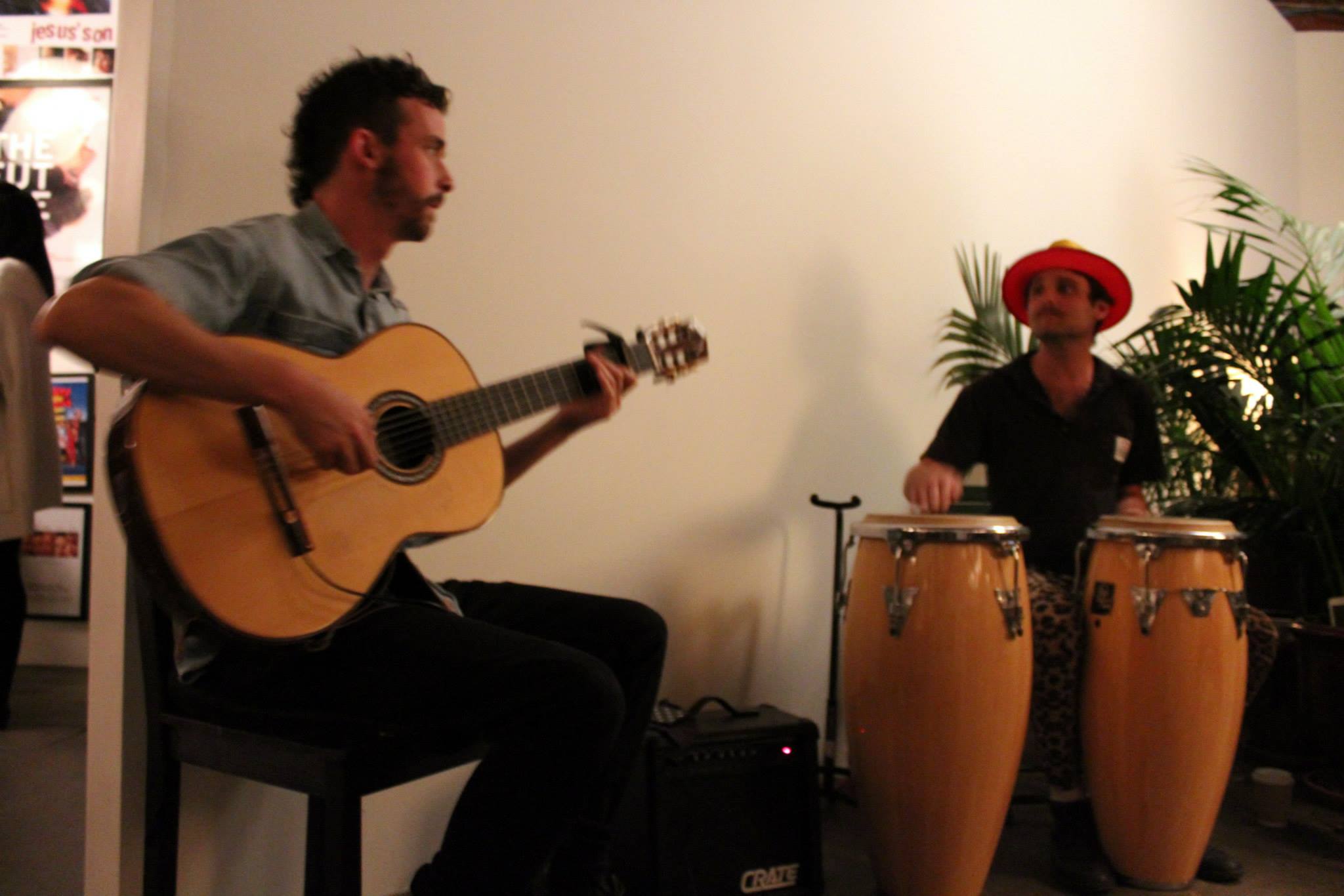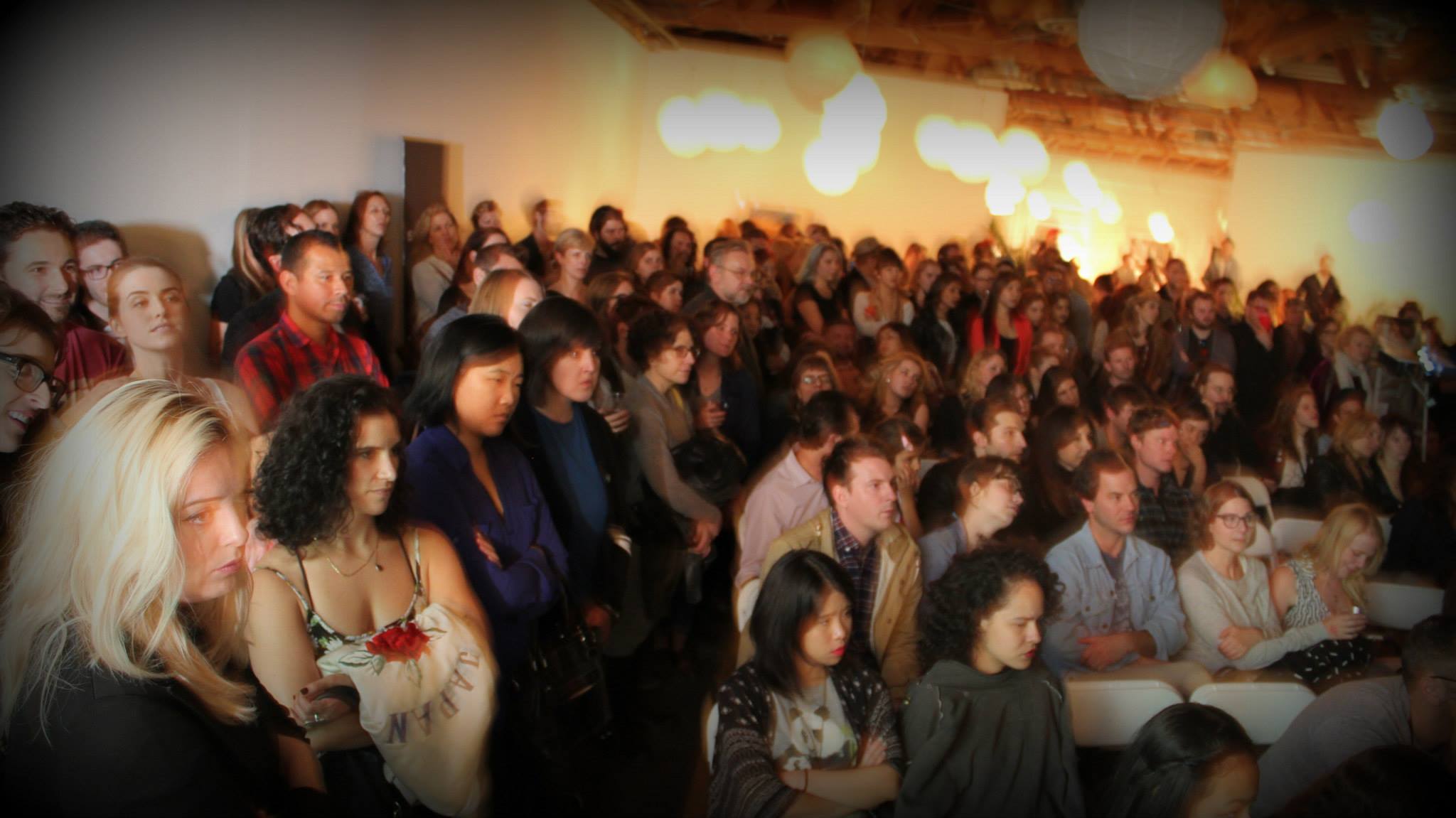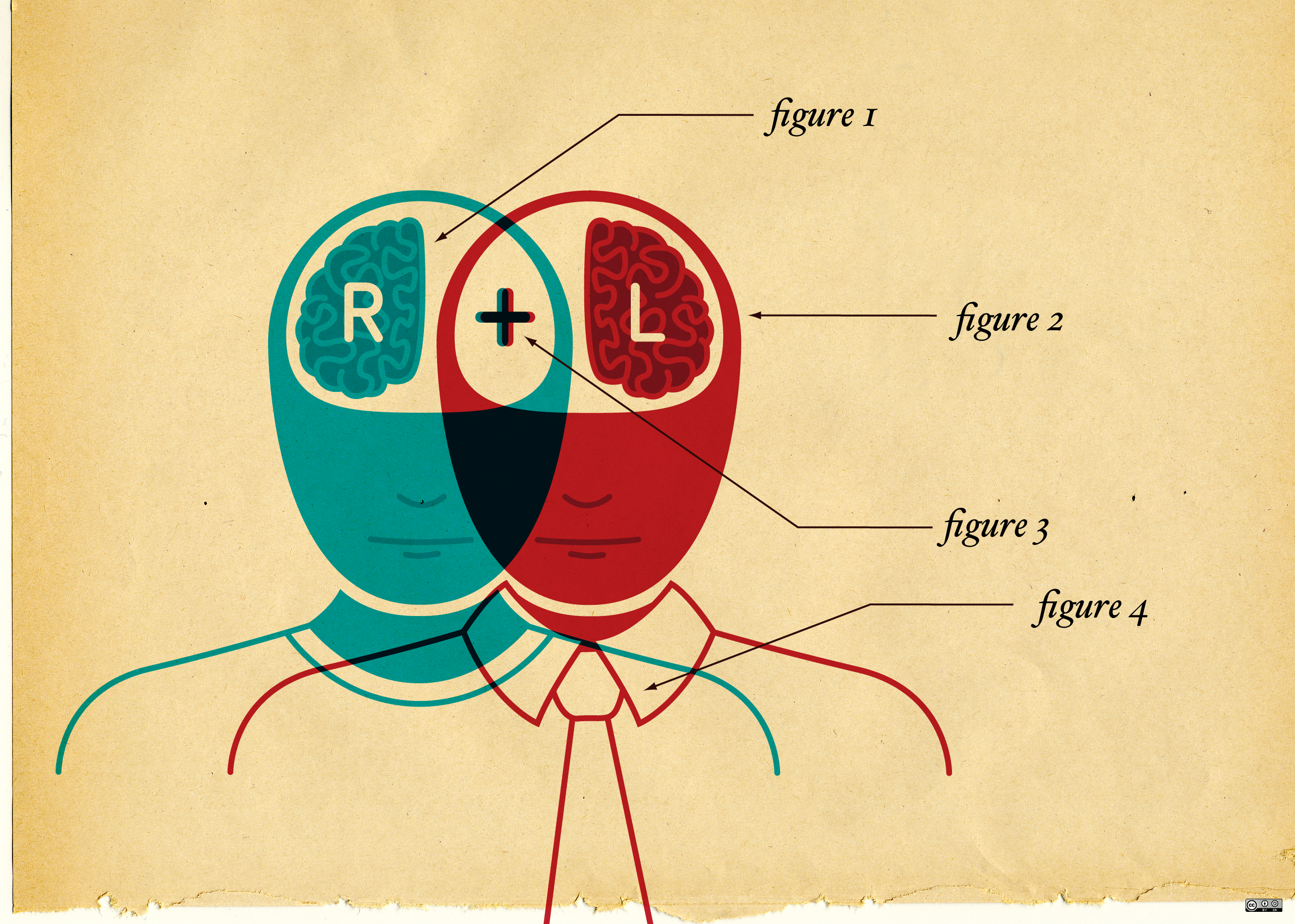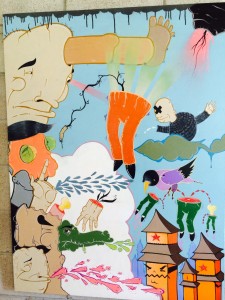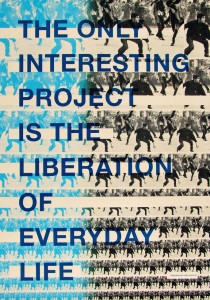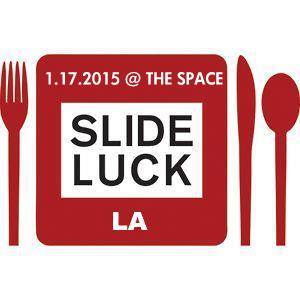
At Oishii, we believe in philosophies that promote acting more than thinking. Over the years, we’ve come to the conclusion that actions in the world make us better thinkers. Thoughts don’t motivate us to move.
We’ve worked to embrace and build on this ideology through various hashtags — #WriteOutdoors and #ThinkLikeATourist — that immerse us in communities of art, design, writing and science. We like “dense” events where lots of people come together from different disciplines and industries.
Recently, we started off the year attending an event we think could work in Los Angeles: Slideluck. It’s already popular in New York, as well as in other cities around the world.
This past Saturday, Slideluck, which is part slideshow and part potluck, returned to the “Best” Coast for a night of food, fun, music, and art in Hollywood. Slideluck LA VII; joint-curated by Krista Martin, Photo Curator for American Apparel, and Michael Hawley, art collector and former President of the Photographic Arts Council, Los Angeles, found a home at Joan Scheckel’s The Space at 6608 Lexington. Walking into a hexagon-shaped corridor, we experienced a display of lights, images, and movement from perhaps an unexpected inclusive crowd over 300 strong.
At first sight, it looked like a scene-y underground hipster loft party, but a few more steps inside and we found ourselves in front of laughing young children of famous photographers ordering IPA’s for their dads, to fashion-forward elders telling us how gorgeous we are (sweet!), to our curious Uber driver/emerging singer-songwriter who asked if it was cool to participate. He didn’t want to just attend; he wanted to interact, which is exactly the community-building movement behind Slideluck LA. It’s a representation of our creative community in all of its beautiful colors, shapes and flavors. The event was a communal canvas built around a showcase of the photographers’ work and more importantly, provided a judgement- and pretentious-free environment, allowing for first-timers at an underground art scene to feel warmly welcomed.
Events like Slideluck are important for us because we know the value of immersion. Immersion and conversation keep us motivated, sharp and engaged. Scientists call these meetups “collisions” with purpose. Group interactions help people challenge their assumptions. Coming together, even if to listen to music and see art, increases the flow of information into your brain and stimulates neurons. If you discuss work, all the better. Most studies of innovation strongly suggest that talking about your work with others, even if informally, helps you move hunches or ideas beyond early stages of superficial thinking. A place called “initial biases” are where many people often stay, go out and talk to people. Dare yourself to think differently.
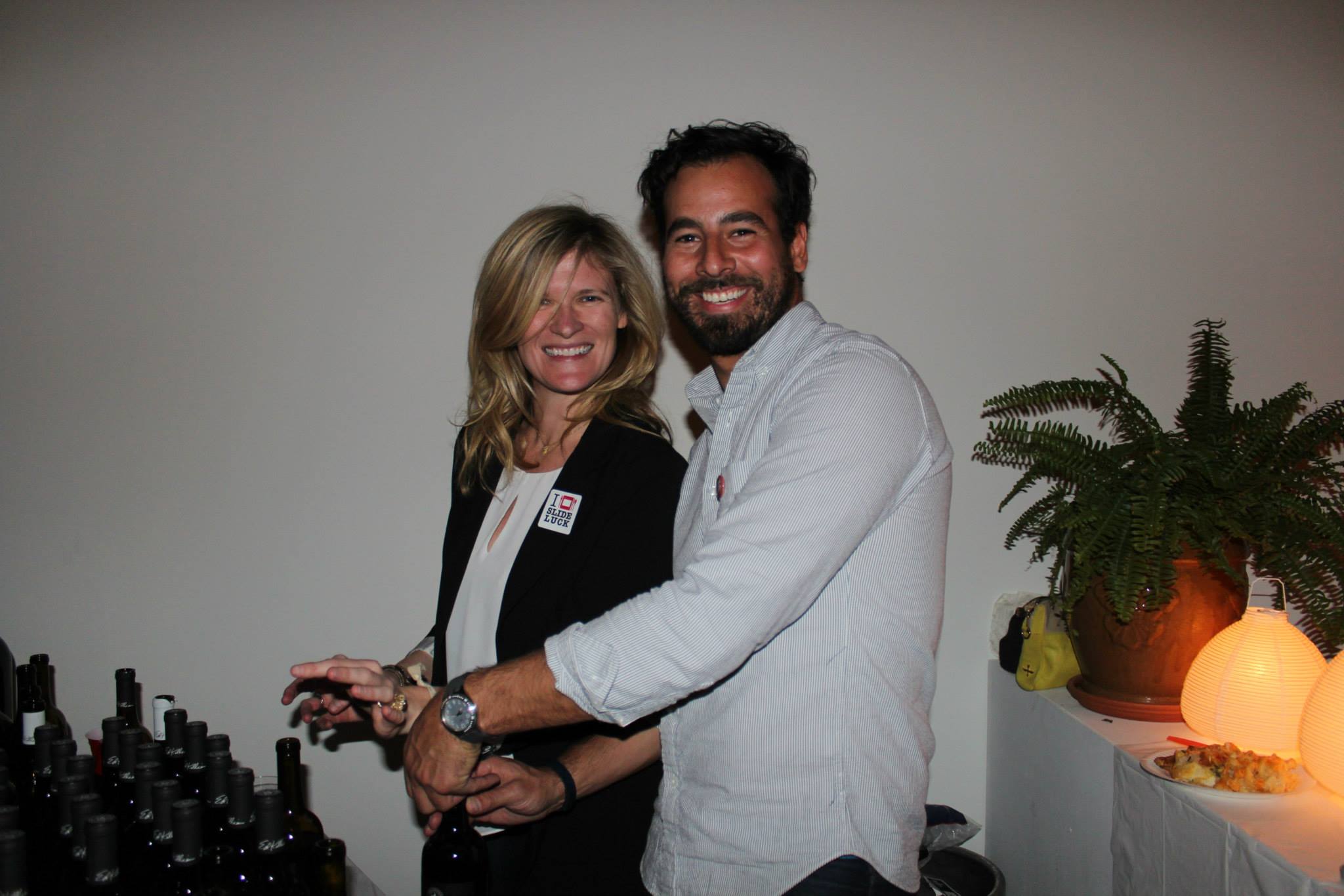
L-R: Loro Piana Interiors’ West Coast Account Executive Caitlin Griffin & Oishii’s Head of Business Development Carlos Penny
